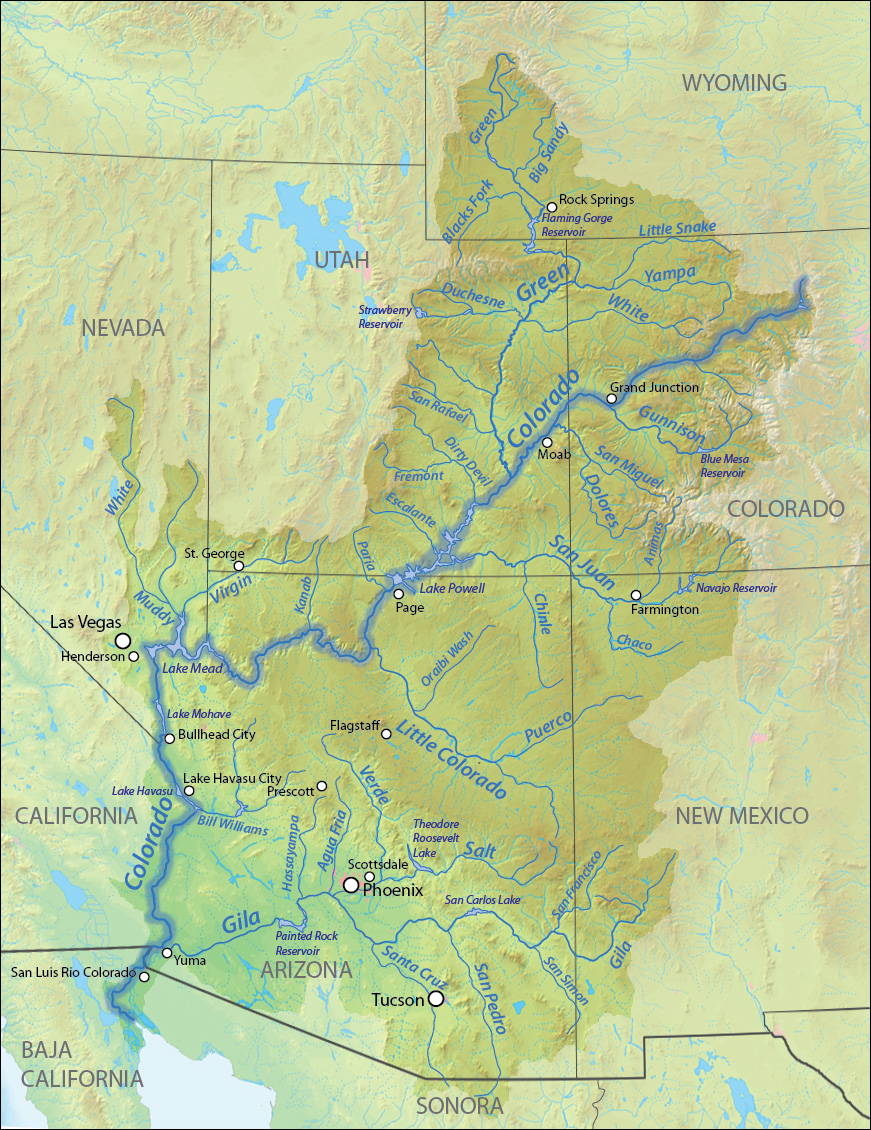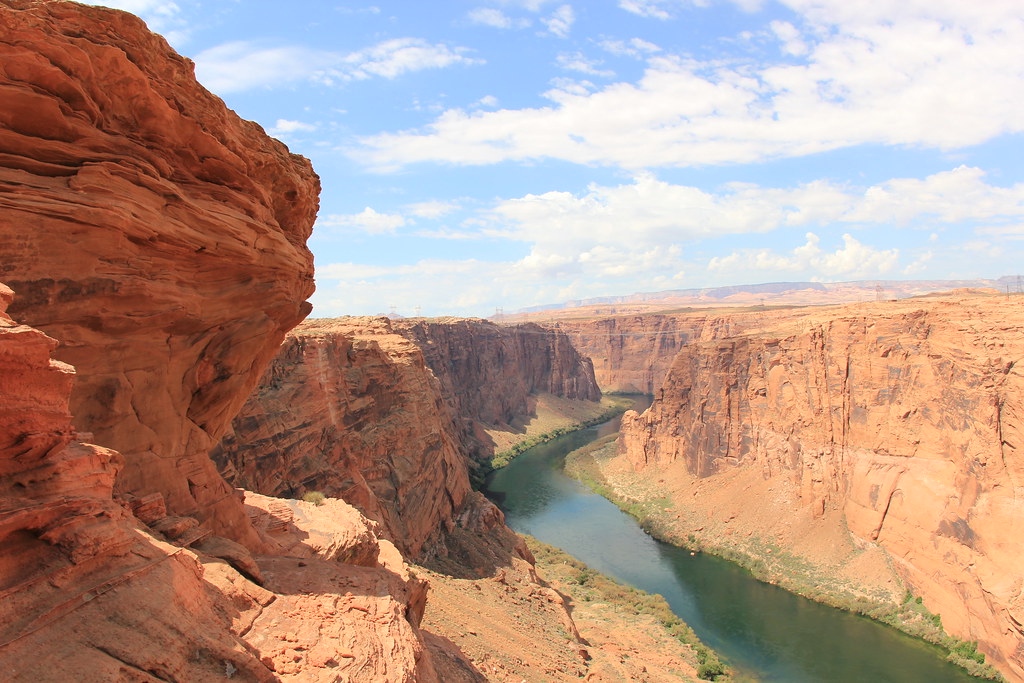Decades deep in megadrought and damaged by the climate crisis, seven states will soon be obligated to stop using an Arizona’s-worth of Colorado River water.
It’s one of those things we’ve been warned about for years. If we stayed the current course, we were in for a chaotic future of climatic instability. There were always excuses as to why changing was too expensive, why any changes should be delayed, and a sizable number of people chose not to believe this was real or happening at all. Those days were fun while they lasted, but as the kids say, shit’s getting real now. And by next year, people who depend on the Colorado River for their water supply are going to have that new reality hitting them in ways they can no longer ignore.
Droughts aren’t that unusual in the western desert. What’s unusual is the long, relatively stable period that allowed significant human habitation in the area. The current 22-year (and ongoing) megadrought has been mitigated largely by sucking up groundwater deposits and the Colorado River, but it is no longer possible to maintain that level of water consumption.

By early 2024, Lake Powell is expected to fall to such a low water level that Glen Canyon Dam will no longer be able to generate electricity. That means 5.8 million homes and businesses in seven states would either go dark or consume more expensive electricity from dirtier sources.
Lake Mead is the largest reservoir in the United States, but it’s now at the lowest level since it was filled in the 1930s. Last week it stood at 1044.03 feet deep, so shallow that decades-old murder victims dumped in the lake are coming to light. It’s an open question how long Hoover Dam would be able to generate electricity if the level falls much lower. And if Mead drops below 895 feet, it reaches dead pool status, and Colorado River water would no longer be able to flow through the lowest outlet of the dam and continue downstream.
With the viability of the whole region at stake, the Federal government must now force water-using states and Native tribes to make some hard choices. At a recent U.S. Senate hearing, Commissioner Camille Touton of the Bureau of Reclamation gave seven states (Arizona, Utah, Colorado, New Mexico, Wyoming, Nevada and California) 60 days to come up with a plan to reduce their usage of Colorado River water by 2 to 4 million acre-feet by 2023, or the Feds would do it for them.
How much water is that? Quite a lot, really.
In this video, journalist Justin “Beau” King breaks it down. An acre-foot of water is the amount it would take to cover one acre of land one foot deep, or about 326,000 gallons. According to the EPA, people use, on average, 82 gallons per day at home, so multiply that by 365 days and you get 29,930 gallons per person per year. An acre-foot, then, represents the annual home water usage for between 10 and 11 people. Together, these seven states are obligated to cut 2-4 million acre-feet, or the equivalent of the home water usage for about 20-40 million people. Looking at it another way, King points out that since Arizona uses about 2.8 million acre-feet of Colorado River water annually, it’s like cutting an Arizona’s-worth of water usage.
Right now, climate change is worsening a drought that is forcing the increasingly dry western U.S. to choose between water use and electricity generation. In the future, that might well seem like a luxurious choice to get to make. Relying on annual snowpack meltwater is not a solid choice when there’s less snow, melting sooner, every year. (Pre)historically, populations in the arid Southwest remained relatively sparse, relying on either a nomadic, hunting and foraging strategy, or as settled farmers with dry-adapted crops and some degree of irrigation. It’s possible that as time goes by, water will become more precious than electricity as the area returns to its natural carrying capacity or becomes uninhabitable in its damaged state.
Tanya Trujillo, the Interior Department’s assistant secretary for water and science, didn’t hesitate to state the obvious, saying, “We are facing the growing reality that water supplies for agriculture, fisheries, ecosystems, industry and cities are no longer stable due to climate change.”
We’ve seen this coming. We were warned. And still, the “invisible hand of the market” gave us some of the fastest-growing cities in the United States with million-plus populations, the brilliant lights of Las Vegas, and alfalfa farms producing hay for export, sending increasingly-scarce Colorado River water as far away as Saudi Arabia.
That which cannot be sustained, will, one day, no longer be sustained.
Related: The Coming Conflicts Over Resource Depletion


Join the conversation!